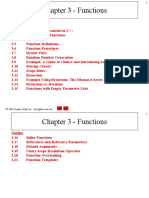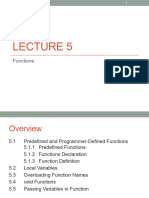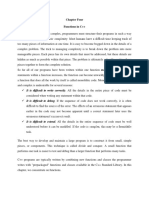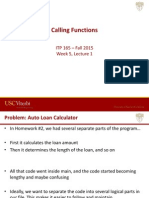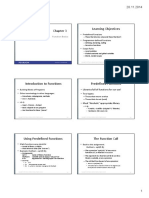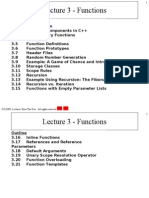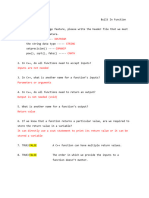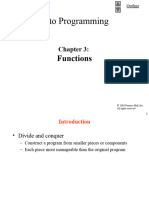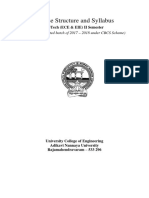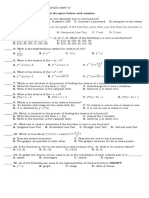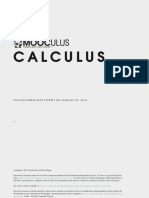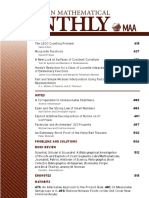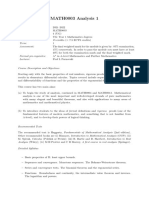0% found this document useful (0 votes)
287 views25 pagesC++ Functions and Declarations Guide
This document discusses programming functions. It reviews mathematical functions from secondary school and how they are implemented in C++. Functions have a domain, range, parameters, and return values. Common trigonometric, exponential, and other functions are built into the C++ standard library. Functions can have side effects beyond their return value. Functions are declared with their parameters and return type, and defined with code that performs the required calculation or task.
Uploaded by
muhammad shoaibCopyright
© © All Rights Reserved
We take content rights seriously. If you suspect this is your content, claim it here.
Available Formats
Download as PDF, TXT or read online on Scribd
0% found this document useful (0 votes)
287 views25 pagesC++ Functions and Declarations Guide
This document discusses programming functions. It reviews mathematical functions from secondary school and how they are implemented in C++. Functions have a domain, range, parameters, and return values. Common trigonometric, exponential, and other functions are built into the C++ standard library. Functions can have side effects beyond their return value. Functions are declared with their parameters and return type, and defined with code that performs the required calculation or task.
Uploaded by
muhammad shoaibCopyright
© © All Rights Reserved
We take content rights seriously. If you suspect this is your content, claim it here.
Available Formats
Download as PDF, TXT or read online on Scribd
/ 25













